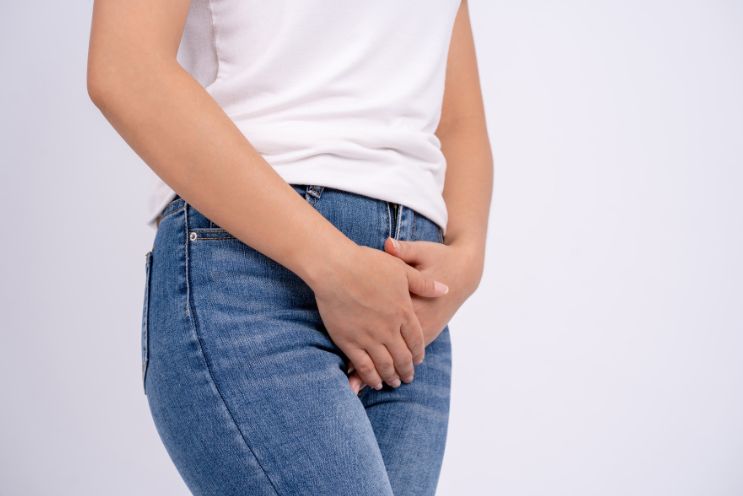Table of Contents
ToggleOverview
Bartholin’s cyst: discovering a painful lump in the vaginal area may have you wondering if you could have an STI or STD. Here is what Your Doctors Online wants you to know.
What is a Bartholin’s Cyst?
The human body is full of glands. The glands throughout your body produce and release different secretions.
The Bartholin’s gland is on each side of the labia, outside the vaginal opening. The function of this gland is to produce lubrication for the vagina.
This lubrication fluid exits the gland through small tubes called Bartholin ducts. When this process becomes disrupted, a Bartholin’s cyst can form. When the duct becomes blocked, the gland will become filled with fluid, and a cyst will form.
What causes a Bartholin cyst?
There isn’t a definite answer to why some women are more prone to developing Bartholin cysts. However, some causes of Bartholin cysts include:
- Trauma, injury, or irritation in the vulvar area.
- Sexually transmitted infections (STIs) such as chlamydia and gonorrhea.
- Bacterial infections such as those caused by Escherichia (E. coli).
What are the symptoms of a Bartholin cyst?
Many potential reasons a woman may experience a Bartholin’s cyst exist. A Bartholin cyst can form due to an injury, swelling, or thicker mucus. These possible changes to a woman’s vaginal area can cause a blockage in the Bartholin ducts, resulting in a Bartholin cyst.
Mainly, Bartholin cysts present as a small pimple on the vaginal lip or a movable lump on the labia majora and do not cause any symptoms apart from minor irritation.
From Cyst to Abscess
However, if a Bartholin cyst converts into an abscess, symptoms may include:
- Swelling/lump and discomfort in the area (painful lump on labia majora)
- Increase in size of the cyst.
- Drainage from the cyst.
- Fever or chills.
- Redness.
- Pain while walking, sitting, inserting a tampon, or wiping after using the restroom. Pain while having intercourse.
The cyst on labia majora can vary in size. Sometimes, a woman may not even realize she has a cyst on the labia. In more extreme cases, the bump on the vagina lip may feel tender or even become infected. A pus-filled cyst is an abscess.
When the vulvar cysts infect, pus can form within the inflamed tissue. This infection can cause the area to become swollen and tender to the touch. In addition, the pain from an infected Bartholin cyst can cause activities such as intercourse and walking to become painful.
Are Bartholin Cysts an STI?
While the bacteria from an STI can cause a Bartholin cyst infection, the cyst itself occurs due to a blockage in your Bartholin ducts. So while some of the symptoms (and the area they are happening!) may be similar to an STI, a Bartholin cyst does not transmit sexually. Still, STDs that cause cysts to become infected include chlamydia and gonorrhea.
Which STIs or STDs can cause a Bartholin’s Abscess?
It is possible for STIs and STDs, such as chlamydia or gonorrhea, to cause the infections that create a Bartholin’s abscess. This results in swelling, redness, difficulty or discomfort in movement, and a potential fever.
Are Bartholin Cysts STDs?
Gonorrhea
Gonorrhea is an STD that can transmit and affects both men and women. It is the most commonly reported notifiable disease in the United States.
In 2018, 583,405 cases of gonorrhea were reported in the United States. Gonorrhea can potentially cause infections in the genitals, rectum, and throat area.
It is a prevalent infection that is likely to affect younger women who are sexually active. Women can get gonorrhea by having vaginal, anal, or oral sex with someone who carries the disease.
Gonorrhea can cause much more than just an infected Bartholin’s cyst. It occurs due to bacteria that spread through sexual contact. While many people with gonorrhea experience no symptoms, it can cause infections.
Chlamydia
Like Gonorrhea, Chlamydia is another STD that can cause infections in Bartholin’s cysts. Chlamydia occurs due to a bacteria known as Chlamydia trachomatis, which can infect both men and women.
Each year about three million people are infected with chlamydia, making it one of the most prevalent STDs in the world.
Younger women who are sexually active, don’t consistently use a condom, or have multiple partners are at a higher risk of infection. Women can get chlamydia in the throat, cervix, or rectum.
In addition to other problems, it can cause severe damage to a woman’s reproductive system. For example, it can cause pelvic inflammatory disease, infertility (from scar tissue in the fallopian tubes), and ectopic pregnancy.
According to the World Health Organization, across the world, over 1 million people suffer from STIs daily. Hence, knowing about these infections and diseases is essential to treat and prevent them.
Who gets Bartholin cysts?
Bartholin cysts are most likely to occur in sexually active women during their reproductive years. Most women are likely to contract the infection in their 20s and 30s. Bartholin cysts occur during your reproductive years. The Bartholin gland does not begin to function until a girl reaches puberty. In addition, many women experience a genitourinary syndrome of menopause (GSM). This term refers to symptoms during menopause, including a lack of lubrication during intercourse. The Bartholin gland is responsible for providing lubrication to the vagina. Therefore, if the gland reduces function during menopause, it makes sense that it is less likely to form a cyst.
Bartholin cysts occur in about 3% of all women. However, women who use condoms are less likely to develop an infected Bartholin cyst.
Related: 7 Important Facts You Need to Know About Your Period
How is a Bartholin cyst diagnosed?
To diagnose a Bartholin cyst, your doctor will perform a physical exam. They will evaluate the size of the cyst and look for signs of infection. Your doctor may test the fluid for diseases if the cyst produces discharge.
Some women will have Bartholin cysts and never know it. The cysts can vary from extremely small to noticeably large lumps. The symptoms of a Bartholin cyst differ depending on whether or not your cyst carries an infection. Some women can experience recurring Bartholin cysts as well.
How do I know if I have a Bartholin’s cyst?
A Bartholin cyst will be:
An early-stage Bartholin cyst is small to a large mass that is not painful. It may be slightly red and located near the vaginal opening.
A Bartholin Abscess will be:
A painful mass with visible swelling and inflammation. You may experience a fever and drainage from your cyst. You may even experience pain during everyday activities such as walking, sitting, or moving around.
Is it true Bartholin Cysts can heal naturally?
Bartholin cysts can heal naturally when there is no infection present. Remember, many small cysts often go undetected by women. Medical professionals advise letting it heal naturally without any intervention if the cyst is painless and no other symptoms are reported.
Women can take over-the-counter pain relievers if they experience mild discomfort or Bartholin cyst burning.
Avoiding sexual activity until the area heals, and doctors recommend keeping the site clean. Home treatment involves soaking the area in warm water. The Bartholin cyst may become likely to pop on its own, but you should not pop the Bartholin cyst at home.
It may seem surprising, but sometimes Bartholin cysts do not require treatment. If the cyst is painless and no other symptoms occur, medical professionals advise letting it heal naturally without any intervention.
What are the treatment options for a Bartholin cyst?
Bartholin’s cyst treatments vary depending on the type of Bartholin cyst, degree of infection, and pain level you are experiencing. A standard course of treatment is to use prescription antibiotics. The antibiotics work to both fight the disease and reduce inflammation. Following are Bartholin’s cyst antibiotics that doctors commonly prescribe:
- Amoxicillin-clavulanate: 875 mg orally twice daily
- Trimethoprim-sulfamethoxazole (co-trimoxazole): 1 to 2 DS tablets orally twice daily
- Metronidazole: 500 mg orally three times daily
- Doxycycline: 100 mg orally twice daily
- Minocycline: 200 mg orally once, then 100 mg orally twice daily
- Clindamycin: 450 mg orally three times daily
- Ciprofloxacin: 500 mg orally twice daily
The usual treatment recommendation is for 5-7 days.
Other Treatment Options
In some cases, the cyst may need draining. Your doctor may use a needle for Bartholin cyst drainage. When this happens, your doctor may also clean the cavity with a 70% alcohol liquid solution to prevent future infection.
Sometimes, a word catheter is inserted and inflated to drain the cyst. Your doctor can leave the catheter in for between two and four weeks to help drain the fluid.
Another option for Bartholin cyst removal is to drain the cyst and vaporize it with a carbon dioxide laser. This treatment is adequate but expensive and can require multiple treatments.
Your doctor may consider a more permanent treatment option. This is done through a surgical process called marsupialization. This is when a small incision is made in the cyst. The doctor will place a few stitches on either side of the incision to help drain the fluid through a small, permanent opening.
In rare cases, when other treatments are ineffective, your doctor may recommend a gland excision. This is a surgical procedure where the Bartholin gland and duct are surgically removed. This is a last resort when other treatment options are ineffective.
How do I prevent being infected?
Although there is no definite way of preventing Bartholin cysts, you can take a few precautions to minimize the chances of infection.
Firstly, the key to keeping infections at bay is indulging in safe sex practices. In addition, it is advisable to use condoms to reduce your chances of infection with STIs and STDs. Another precautionary measure is maintaining good hygiene. Good personal hygiene can prevent bacterial infections and help a Bartholin’s cyst heal faster.
Lastly, it is essential to be aware of your sexual health and contact your doctor to ensure that you do not have any STIs or STDs, mainly if you are sexually active.
If you have questions on preventing Bartholin’s cyst or STDs, contact our online doctors today and share your questions.
At Your Doctor’s Online, we ensure you always have a direct communication channel with qualified physicians.
Is a Bartholin’s cyst benign or cancerous?
Cysts form within the ducts of Bartholin glands due to obstruction of the duct. If the cyst becomes infected, it can cause discomfort or pain. Adenocarcinoma is a rarer type of vulvar cancer. It can originate in the Bartholin glands on the sides of your vaginal opening.
When to Consult a Doctor?
While Bartholin cysts are often harmless and heal independently without medical intervention, you still need to speak to a doctor. If you feel a lump or mass near the opening of your vagina, it is crucial to determine if the mass is a cyst or another medical issue. This is particularly important if you’ve hit menopause. Your doctor can also use a cervical screening test to confirm the diagnosis. In rare cases, more often in women over 40, your doctor may need a biopsy to rule out Bartholin’s gland cancer.
If you suspect your cyst infection (due to swelling, draining, or fever), it is essential to start antibiotics for treatment. You can get a prescription by consulting our doctor at Your Doctors Online.
FAQs About Bartholin Cysts Answered by Your Doctors Online Team
While Bartholin cysts are often harmless and heal independently without medical intervention, you will require treatment such as antibiotics if you have pain or any symptoms of an infection.
A Bartholin cyst can last from a few days to a few weeks. After that, it may remain symptomless or develop into an abscess.
Do not squeeze, pop, or insert sharp objects like needles into a cyst to burst it open. This can lead to an infection or injury. Bartholin cysts can drain on their own after several days of treatment.
A combination of pus, mucus, bacteria, blood, or other fluid can ooze from the site, opening the cyst opens or bursts.
Although there is no specific way to prevent Bartholin cysts, you can take a few precautions to minimize the chances of infection.
The key to keeping infections at bay is indulging in safe sex practices. In addition, it is advisable to use condoms to reduce your chances of infection with STIs and STDs. Another precautionary measure is maintaining good hygiene. Good personal hygiene can prevent bacterial infections and help a Bartholin’s cyst heal faster.
Yes, recurrence is common. However, if a cyst or abscess keeps recurring, doctors may perform a surgical procedure, marsupialization.
Stress is not a potential factor in causing Bartholin cysts. However, injury, infections, or STDs commonly associate with the development of Bartholin cysts.
Yes, an injury or bacterial infection can result in Bartholin cysts.
While the bacteria from an STI can cause infection in the Bartholin cyst, the cause of the cyst itself is a blockage in your Bartholin ducts. So while some of the symptoms (and the area they are occurring!) may be similar to an STI, a Bartholin cyst does not transmit sexually. Still, STDs that cause cysts to become infected include chlamydia and gonorrhea.
Many potential reasons a woman may experience a Bartholin’s cyst exist. For example, a Bartholin cyst can form due to an injury, swelling, or even thicker mucus. These potential changes to a woman’s vaginal area can potentially cause a blockage in the Bartholin ducts that results in a Bartholin cyst.
Discharge, excessive secretions, or fluid accumulation can cause the gland’s opening to become obstructed, usually caused by infection or injury resulting in recurring Bartholin cysts.
Endometriosis of the Bartholin gland is a rare finding. Endometriosis may be a primary or secondary finding caused by episiotomy or other postoperative scars.
A hormonal imbalance may result in vaginal dryness and irritation, but it can not develop a Bartholin cyst.
The procedure is not painful as doctors carry it out under local anesthesia. However, after the process, you may experience discomfort and pain in your vulva for several days.
If the cyst causes no symptoms, no treatment is necessary. Instead, the treatment plan is based on the size of the cyst, pain, and whether the cyst has an infection, resulting in an abscess.
Surgery to remove the gland is done under general anesthesia and can take an hour. However, you may require hospitalization for 2-3 days after.
Usually, the cyst causes no symptoms and can resolve on its own. However, if it develops into a Bartholin’s abscess worsens and is left untreated, the infection could spread into the body, resulting in a condition called septicemia.
It is possible for STIs and STDs, such as chlamydia or gonorrhea, to cause the infections that create a Bartholin’s abscess.







